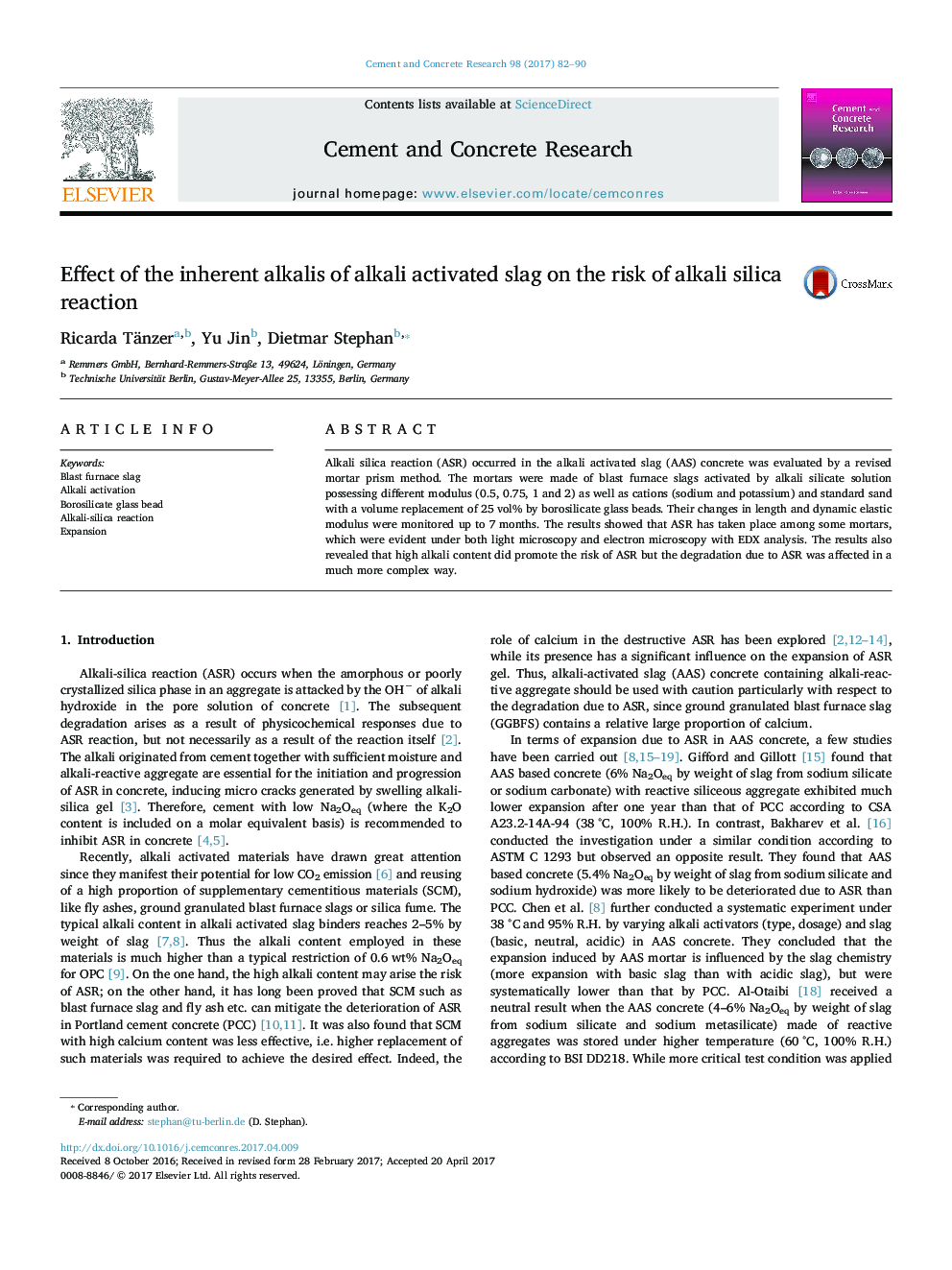| Article ID | Journal | Published Year | Pages | File Type |
|---|---|---|---|---|
| 5437089 | Cement and Concrete Research | 2017 | 9 Pages |
Abstract
Alkali silica reaction (ASR) occurred in the alkali activated slag (AAS) concrete was evaluated by a revised mortar prism method. The mortars were made of blast furnace slags activated by alkali silicate solution possessing different modulus (0.5, 0.75, 1 and 2) as well as cations (sodium and potassium) and standard sand with a volume replacement of 25Â vol% by borosilicate glass beads. Their changes in length and dynamic elastic modulus were monitored up to 7Â months. The results showed that ASR has taken place among some mortars, which were evident under both light microscopy and electron microscopy with EDX analysis. The results also revealed that high alkali content did promote the risk of ASR but the degradation due to ASR was affected in a much more complex way.
Related Topics
Physical Sciences and Engineering
Engineering
Industrial and Manufacturing Engineering
Authors
Ricarda Tänzer, Yu Jin, Dietmar Stephan,
